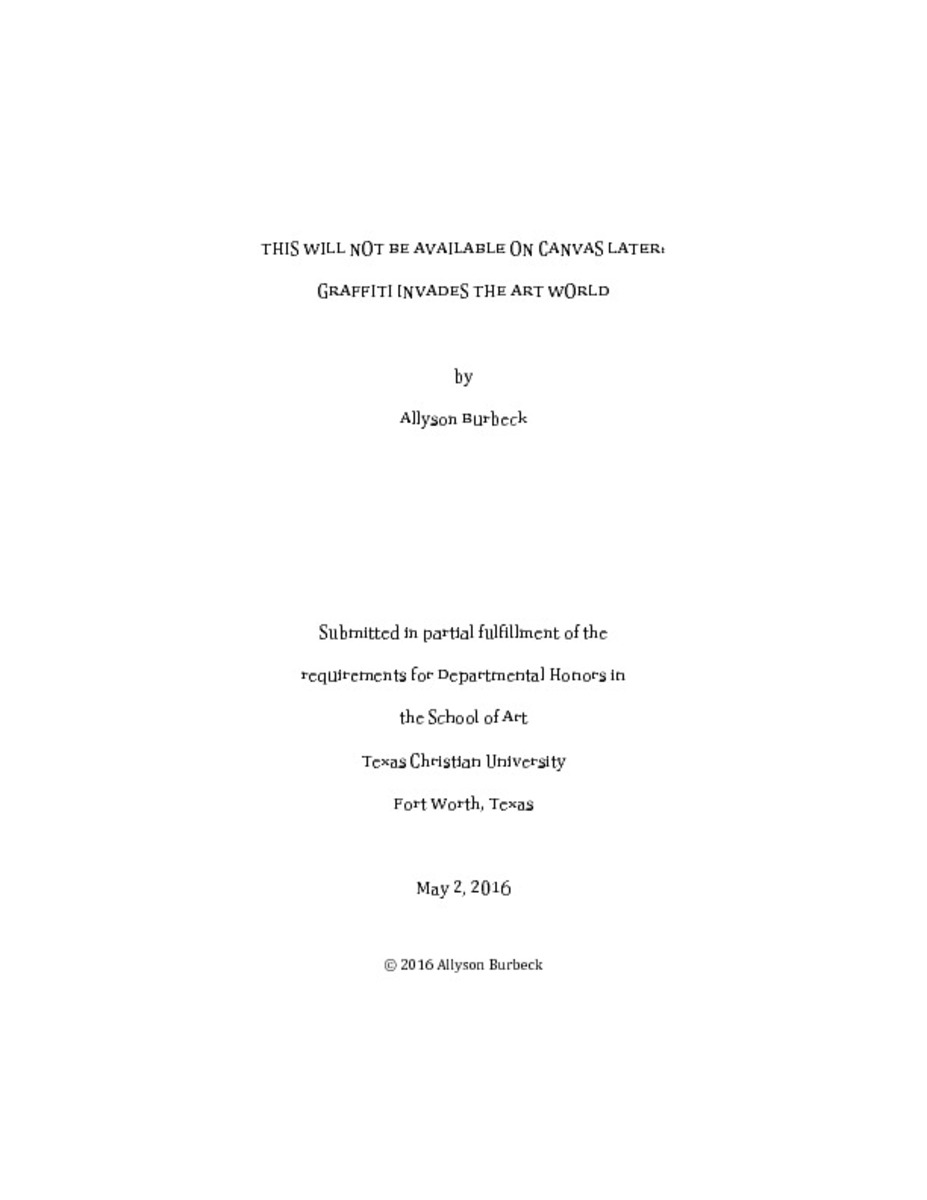This Will Not Be Available On Canvas Later: Graffiti Invades the Art WorldShow full item record
| Title | This Will Not Be Available On Canvas Later: Graffiti Invades the Art World |
|---|---|
| Author | Burbeck, Allyson |
| Date | 2016 |
| Abstract | This paper explores the influence of graffiti writing on three artists, Jean-Michel Basquiat, Keith Haring, and David Wojnarowicz. It discusses the political, economic, and social environment of the United States in the 1980s and how it contributed to the formation of the graffiti subculture. Graffiti art emerged in the 1970s and 1980s in New York City. This new art form arose in beleaguered communities as a way for graffiti writers to assert control over their urban environment. While Basquiat, Haring, and Wojnarowicz did not call themselves graffiti writers, their techniques, concepts, and attitudes influenced their oeuvres and how each artist presented himself to the art market. This paper demonstrates how these three artists claimed control over their bodies of work rather than become influenced by commercial art galleries. All three of these artists challenged mainstream gallery art by producing works more accessible to the general public. Basquiat, Haring, and Wojnarowicz each represented a wider spectrum of society and groups that were not normally depicted in art. They were not afraid to address issues or problems that society would rather ignore. |
| Link | https://repository.tcu.edu/handle/116099117/11436 |
| Department | Art |
| Advisor | Colpitt, Frances |
| Additional Date(s) | 2016-05-19 |
Files in this item
This item appears in the following Collection(s)
- Undergraduate Honors Papers [1478]
Related items
Showing a few items related by title, author, creator and subject.
-
teamLab: Digital Playgrounds
Nguyen, Kim Phan (2021)Defined as the participation in an activity for pleasure or recreation, play can serve a greater purpose especially in art forms that express more intangible concepts. I propose the idea of play as a relational tool for ... -
Critical regionalism and the politics of socially engaged documentary photography in the United States, 2000-2010
Boutelle, Hailey (2022-05-02)From 2000-2010, three socially-engaged women photographers spent time documenting lower-class residents of the United States in Appalachia, Louisiana, and Pennsylvania, respectively. These series are reflexive of their ... -
Styling the elite: issues of the Baroque, Buen Gusto, and Creole identity in late 18th-century Novohispanic portraiture
Sztuk, Melissa (2023-05-04)Secular portraiture flourished during the eighteenth century in New Spain. These works’ stylistic tenets were grounded in an established Baroque visual program developed over centuries in the viceroyalty. At the close of ...
© TCU Library 2015 | Contact Special Collections |
HTML Sitemap






